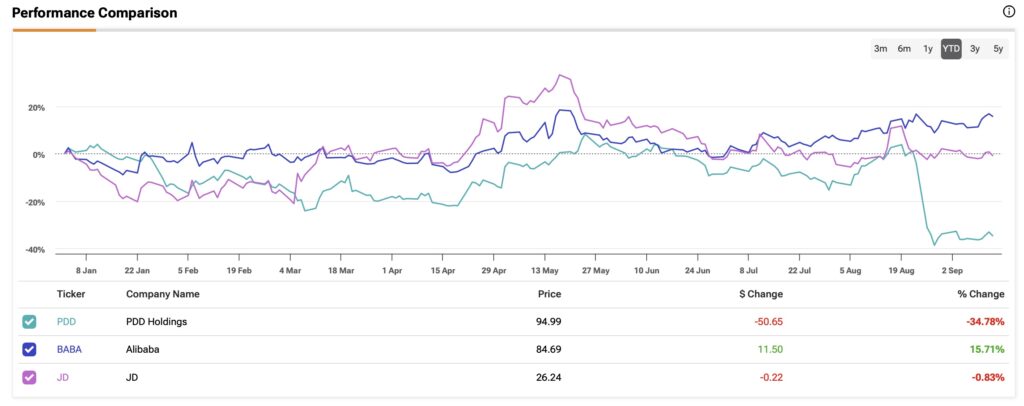We are thrilled to embark on a journey to uncover the secrets behind Kering's remarkable success in the luxury industry. As one of the biggest players in the world of personal luxury goods, Kering has crafted an empire that includes iconic brands like Gucci and Saint Laurent Paris.
But truly understanding the driving forces behind Kering's growth requires a deep exploration into the spread of luxury model and a meticulous analysis of its sales regions. In this article, we will apply this model to forecast Kering's future growth by examining sales across different regions.
Additionally, we will delve into the influence of Western luxury brands in Asia and how this impacts Kering's expansion. Join us as we unravel the secrets behind Kering's luxury empire and gain invaluable insights into its extraordinary achievements.
Key Takeaways
- Kering is one of the largest personal luxury goods companies in the world, competing with luxury conglomerates like LVMH and Richemont.
- The Spread of Luxury model, which has been used to estimate the growth of other luxury companies, can be applied to Kering's operations, including both luxury and sportswear brands.
- Calculating Kering's sales to customers from each region requires adjusting for the proportion of sales made to tourists.
- Kering's sales regions are where the products are sold, not necessarily where the buyers come from.
Valuing Kering's Luxury Empire
To understand the true value of Kering's luxury empire, we need to examine its sales distribution and apply the Spread of Luxury model to forecast its future growth. By calculating Kering's market share and analyzing its brand portfolio, we can gain valuable insights into the company's position in the luxury goods industry.
Kering is one of the largest personal luxury goods companies in the world, with a diverse range of luxury brands including Gucci and Saint Laurent Paris, as well as its Sport and Lifestyle division with brands like Puma and Volcom.
The Spread of Luxury model, which has been successfully used to estimate the growth of other luxury conglomerates like LVMH and Richemont, can be applied to Kering's operations to predict its future growth. By understanding the distribution of Kering's sales in different regions, we can make informed projections about its market performance and potential.
Applying the Spread of Luxury Model
We will now apply the Spread of Luxury Model to analyze Kering's sales distribution and forecast its future growth. By evaluating the potential of Kering's sportswear brands and considering the impact of applying the spread of luxury model, we can gain insights into the company's growth trajectory.
Here are the key points to consider:
- Sales distribution: We'll examine Kering's sales to customers from different regions, such as Western Europe, Asia Pacific, Japan, and North America. This analysis will help us understand the geographical composition of Kering's customer base.
- Forecasting future growth: Using the Spread of Luxury model, we can predict Kering's future growth by forecasting the development of its per capita sales in each region. This will provide us with an estimation of the company's growth potential in the coming years.
- Impact on Kering's growth: By applying the spread of luxury model, we can assess the impact of factors such as the level of luxury goods consumption in customers' home regions and the contribution of sales made to tourists. This analysis will give us a comprehensive understanding of Kering's growth prospects and help us identify areas of potential growth for the company's sportswear brands.
Estimating Kering's Sales in Western Europe
Our analysis reveals that a significant portion of Kering's sales, approximately 90.7% of their total sales, can be attributed to customers from Western Europe.
To calculate the regional contribution, we need to consider the breakdown of sales in Western Europe and the distribution of sales in the Asia Pacific region.
Bain & Company's study shows that about 53.5% of European luxury goods sales are made to tourists, with Eastern Europe accounting for 17.4% of European luxury sales to Europeans. By subtracting Eastern Europe's contribution, we can estimate Western Europe's sales to Europeans.
In the Asia Pacific region, it's estimated that 15.2% of luxury sales are made by tourists, primarily from Japan.
This information helps us understand the sales distribution in Western Europe and the Asia Pacific region, which is crucial for predicting Kering's future growth using the Spread of Luxury model.
Analyzing Kering's Sales in Other Regions
Analyzing Kering's sales in other regions reveals important insights about the distribution of luxury goods buyers and the potential for future growth. Here are three key findings:
- Asia Pacific:
Kering's sales to customers in the Asia Pacific region, including China, amount to 2,729.1 million euros. Interestingly, slightly less than half of Kering's sales to non-Japanese Asian customers occur outside of Asia. This aligns with the trend that over half of luxury goods sales to Chinese consumers occur outside of China. Analyzing customer demographics in this region is crucial for understanding the growth potential of Kering's luxury brands.
- Western Europe:
Sales to customers from Western Europe account for 90.7% of Kering's total sales. This region is a significant market for Kering, with a high concentration of luxury goods buyers. Exploring market trends and understanding the preferences and purchasing power of customers in Western Europe is essential for driving future growth.
- North America:
Sales to customers from North America account for 94.0% of Kering's total sales. This region is another important market for Kering, with a strong customer base. Analyzing customer demographics in North America and staying abreast of market trends will be key in seizing opportunities for further expansion.
Unveiling Kering's Sales to Asia Pacific Customers
Now, let's delve into Kering's sales to customers in the Asia Pacific region, including China, and uncover the key insights that will contribute to our understanding of their success in this lucrative market. Kering's market share in the Asia Pacific region is significant, with total sales amounting to 2,729.1 million euros. A closer look reveals that approximately 15.2% of these sales are made to Asian tourists, primarily from Japan. To illustrate this further, we can use the following table:
| Sales to Asia Pacific Customers | Sales to Japanese Customers | Sales to Customers from Western Europe |
|---|---|---|
| 2,729.1 million euros | 1,566.9 million euros | 1,851.0 million euros |
This table highlights the distribution of Kering's sales in the Asia Pacific region, Japan, and Western Europe. It is clear that Kering's sales to Asian tourists play a significant role in their overall success in the Asia Pacific market.
Understanding Kering's Sales to Japanese, Western European, and North American Customers
To gain insights into Kering's sales to different regions, let's examine the breakdown of their sales in Japan, Western Europe, and North America:
- Sales to Japanese customers:
- Kering's sales to Japanese customers amount to 1,566.9 million euros.
- Sales in Japan account for 55.8% of the total sales to Japanese customers.
- Sales in the Asia Pacific region account for 31.3%.
- Sales in North America account for 8.7%.
- Analyzing customer preferences in Japan can help identify growth opportunities and tailor marketing strategies accordingly.
- Sales to customers from Western Europe:
- Kering's sales to customers from Western Europe amount to 1,851.0 million euros.
- This region represents 90.7% of Kering's total sales.
- Understanding the preferences and demands of customers in Western Europe can help drive further growth and expansion.
- Sales to customers from North America:
- Kering's sales to customers from North America amount to 1,674.7 million euros.
- This represents 94.0% of Kering's total sales.
- By analyzing customer preferences and identifying growth opportunities, Kering can continue to strengthen its presence and increase market share in this region.
Frequently Asked Questions
What Is the Predicted Growth Rate for Kering's Luxury Empire According to the Spread of Luxury Model?
According to the Spread of Luxury model, the predicted growth rate for Kering's luxury empire can be estimated by analyzing its sales and applying global trends. By forecasting per capita sales in each region, we can determine the future growth potential.
How Does Kering's Sales to Japanese Customers Compare to Its Sales to Customers From Western Europe and North America?
Kering's sales to Japanese customers account for 55.8% of total Japanese sales, while sales to Western European customers make up 90.7% of total sales. Sales to North American customers represent 94.0% of total sales.
What Percentage of Kering's Sales in Western Europe Are Made to Tourists?
What factors contribute to the high percentage of tourist sales for Kering in Western Europe? How does Kering target and attract tourist customers in Western Europe? These are key questions to understanding Kering's success in the region.
How Does Kering's Sales to Non-Japanese Asian Customers Compare to Its Sales to Japanese Customers in the Asia Pacific Region?
In comparing Kering's sales to non-Japanese Asian customers with its sales to Japanese customers in the Asia Pacific region, we can see that the majority of Kering's sales in the region come from non-Japanese Asian customers.
What Is the Proportion of Luxury Sales in the Asia Pacific Region That Are Made by Tourists, Primarily From Japan?
Japanese tourists account for an estimated 15.2% of luxury sales in the Asia Pacific region. Chinese tourists also have a significant impact on luxury sales in Asia Pacific, with over half of luxury goods sales to Chinese consumers occurring outside of China.




